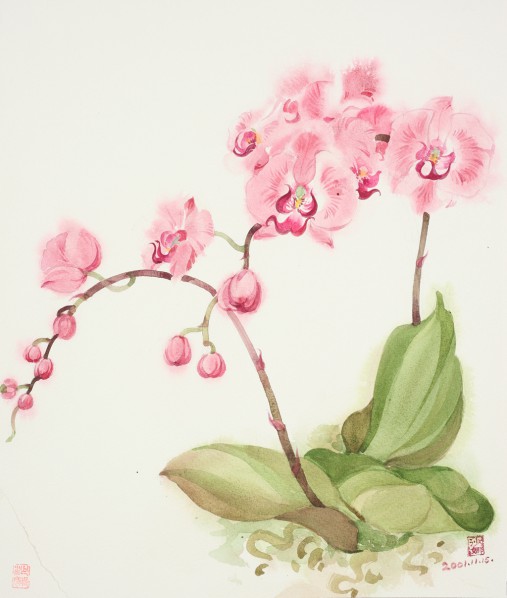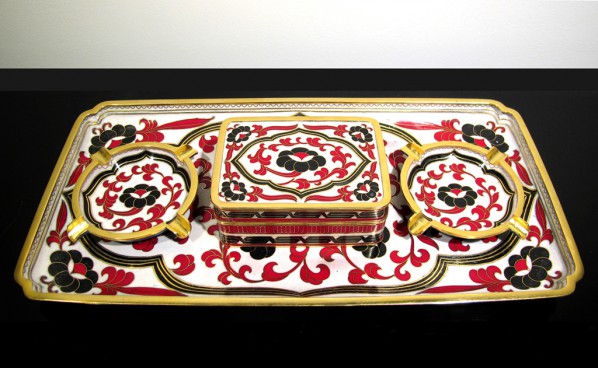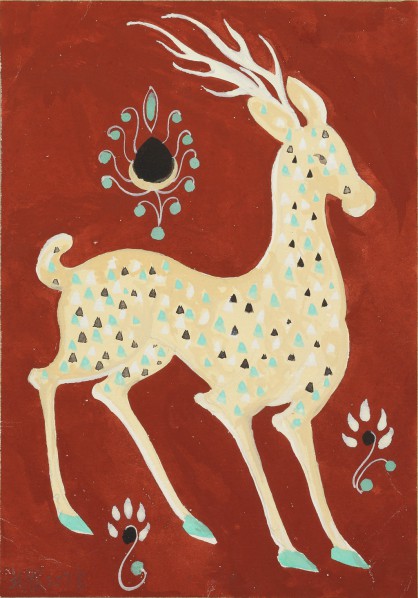
At 3:00 pm on February 12, 2015, jointly hosted by China International Culture Association, China Artists Association, Dunhuang Academy of China, Guan Shanyue Art Museum, Academy of Art & Design, Tsinghua University, “Everlasting Beauty of Dunhuang: The Exhibition of Saone Chang’s Study and Applications of Dunhuang Art Designs” opened at Guan Shanyue Art Museum in Shenzhen. The opening ceremony was presided over by Chen Xiangbo, Director of Guan Shanyue Art Museum, Dong Junxin, Vice President of China International Culture Association, Hou Liming, Director of the Institute of Fine Arts at Dunhuang Academy of China, Wei Shiyuan, President of China Cultural International Development Association, Saone Chang, artist and the former President of the Central Academy of Craft Art, as well as curator Tina Huang attended the opening ceremony and gave a speech.

Saone Chang
The exhibition is an important report on the work of the artist, designer, educator Saone Chang, who is called the “Beauty of the Desert”, during the last 60 years, displaying the reproductions by Saone Chang which he had produced at an early age and Shao Fang, an artist in Dunhuang in the 20th century, the picture analysis of Dunhuang covers the previous dynasties, the individual creation of flowers, the cloisoinne handicrafts designed under the guidance of Lin Huiyin in the 1950s, as well as the application of design work by the designers of the new generation, featuring a total of 300 pieces, which makes it a key exhibition following the show at the Today Art Museum in July, 2014.
Since the 20th century, Saone Chang’s father Chang Shuhong and others promoted “Dunhuang Art” to the world, and became “The Guardian of Dunhuang.” Saone Chang inherits the thoughts and skills, taking the study of Duhuang art as her main work throughout her life, she was engaged in the study of Dunhuang murals, studying and copying traditional decorative patterns, as early as the 1950s, she used Dunhuang classical figures in her creative design.

Saone Chang, The Phalaenopsis, directly using color to paint the object without any ink line, 46 x 37 cm, 2001
In the international conference after the founding of new China, the famous scholar Lin Huiyin led Saone Chang and others to apply the classical figures to art, designing handicrafts such as silk headbands with Dunhuang patterns, waistcoats with the imitation of silk ribbons, lace and embroidery in the Ming and Qing Dynasties, cloisonne jewel cases as gifts for friends, which were often praised by people who had received gifts when people returned following visits. But unfortunately, due to environmental factors at the time, the burgeoning cultural aesthetic creative industry was not popularized which becomes the biggest regret for Saone Chang.

Saone Chang,Cloisonné Smoking Sets with Scroll Grass Patterns
Now the eighty-four year old Saone Chang badly wishes to see Chinese craft aesthetics revitalize, blossom and yield fruit. The Everlasting Beauty of Dunhuang not only shows her important reproductions over more than 60 years, creations and designs of flower paintings, but also integrates a number of young designers and the design factory, experimentally combining Dunhuang patterns with contemporary designs to create new works and products using the application with the design included on articles of daily use such as the design of new cloisonne clocks, porcelain and clothing.

Saone Chang, Reproduction of A Deer of Nine Colors, Cave 257 of the North Wei Dynasty, 18 x 13 cm
Saone Chang said that, it was necessary for creative design to focus on the exploration of the integrated relationship between the “source and trend” of art, which believes classical culture is fundamental, in order to create a new trend. It was necessary to use Chinese cultural and artistic elements in the creation and design, which did not only prompt an international cultural exchange, but also develops Chinese people’s appreciation and perspective toward classical culture and art.
Curator Tina Huang said, in addition to the Shenzhen show, “Everlasting Beauty of Dunhuang” 2015 world tour was about to be showcased in Taiwan, Turkey and Russia, in order to display the beauty of classical Dunhuang art on the international arena.
Text by Art China, translated by Chen Peihua and edited by Sue/CAFA ART INFO
Photo by Guan Shanyue Art Museum




























